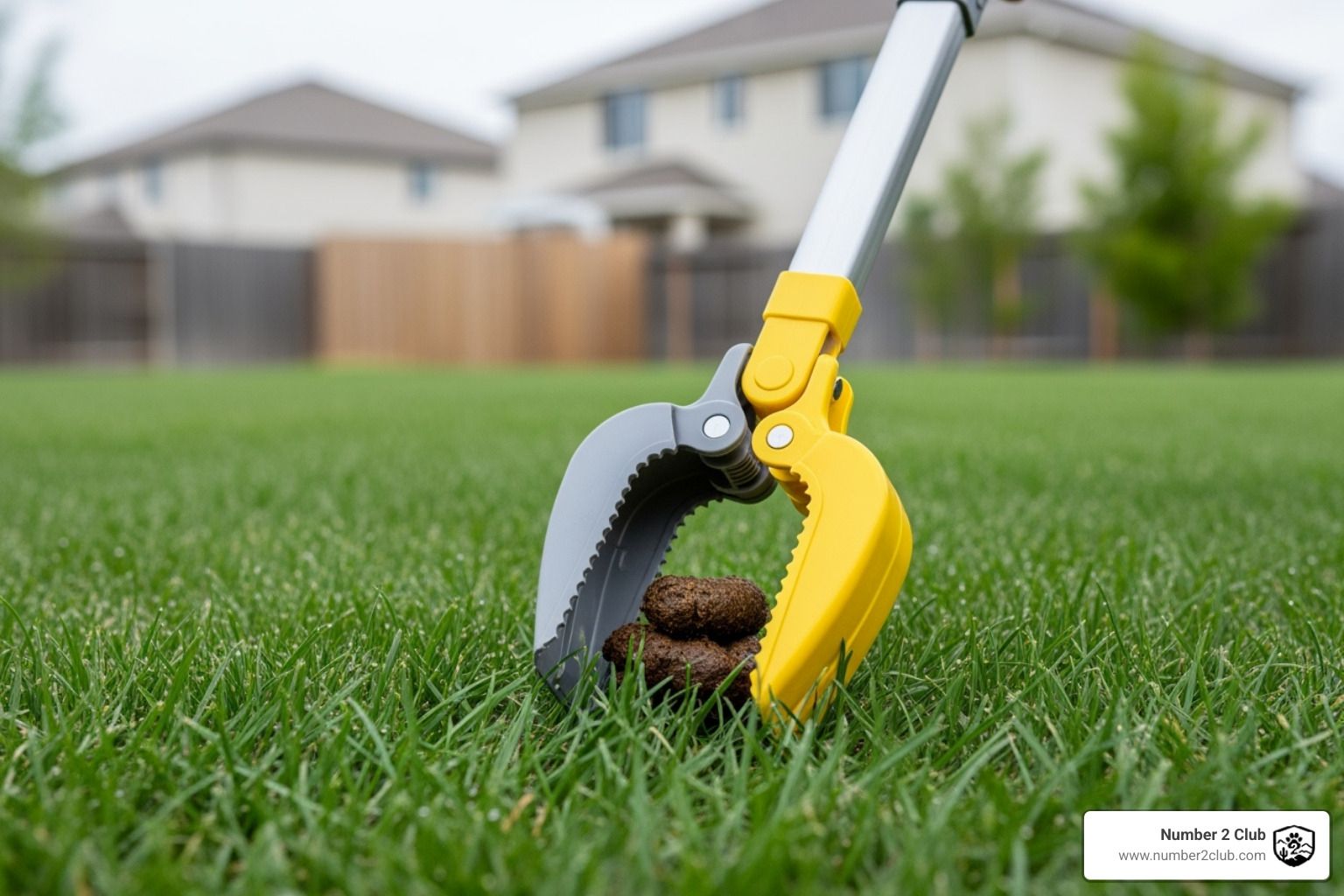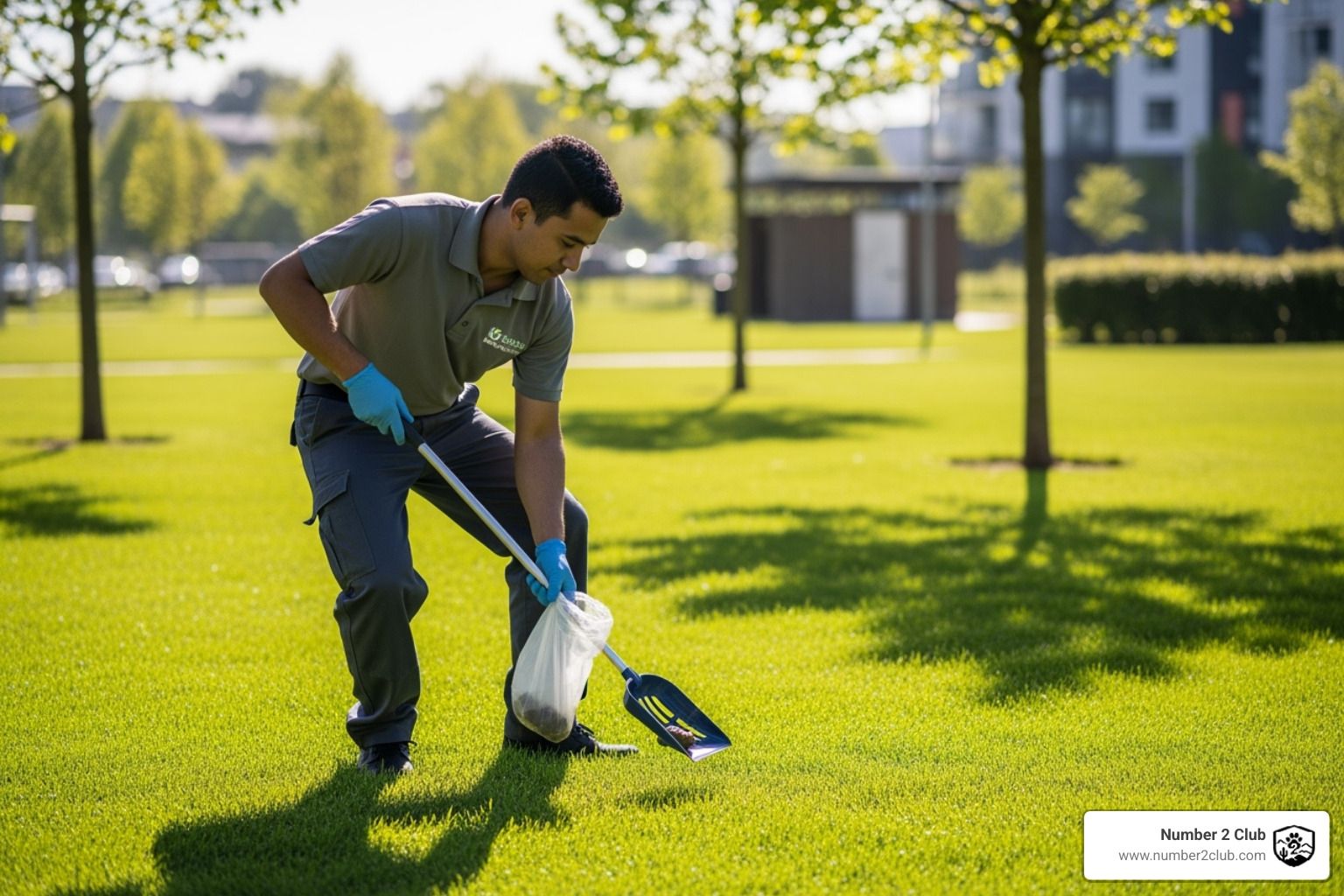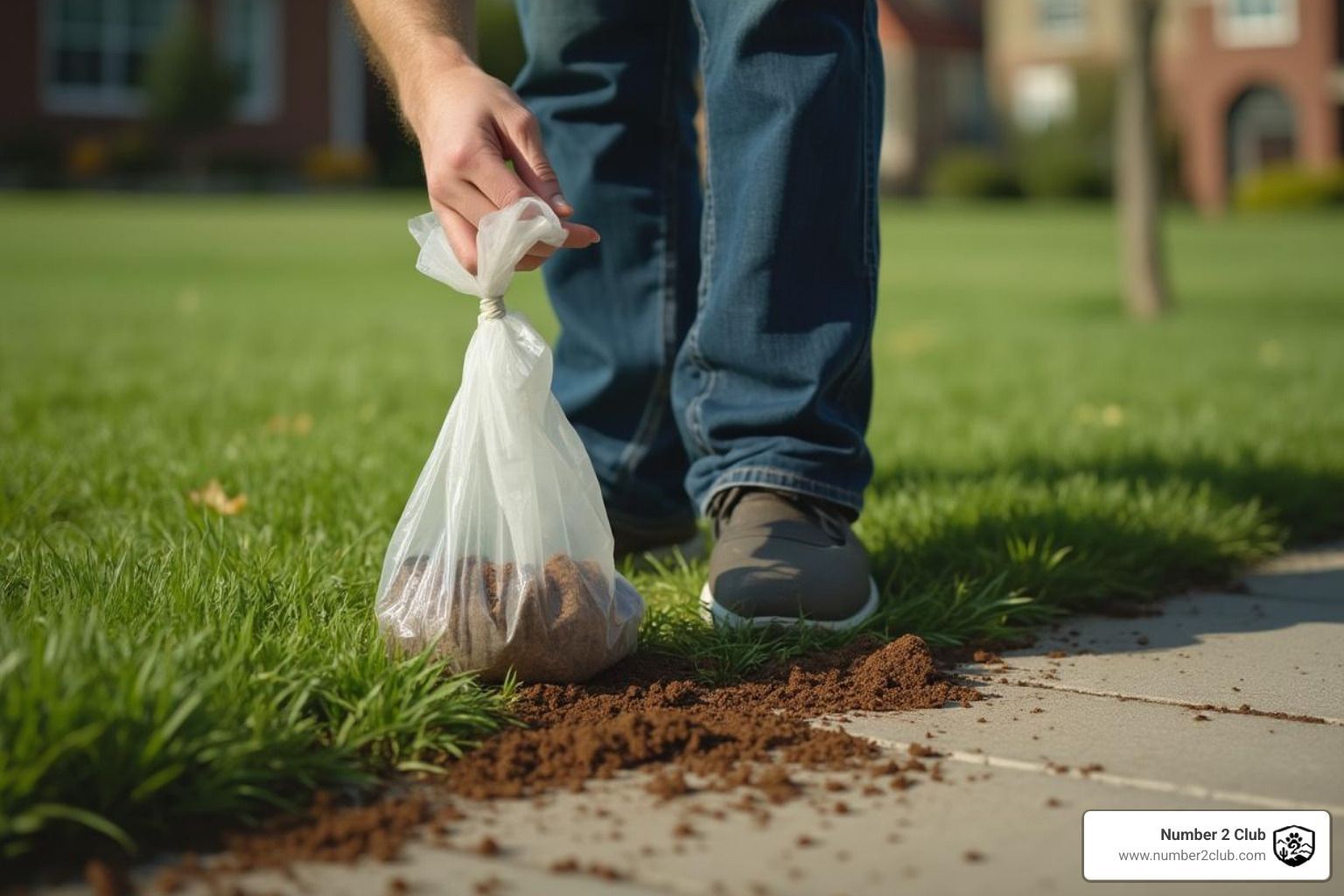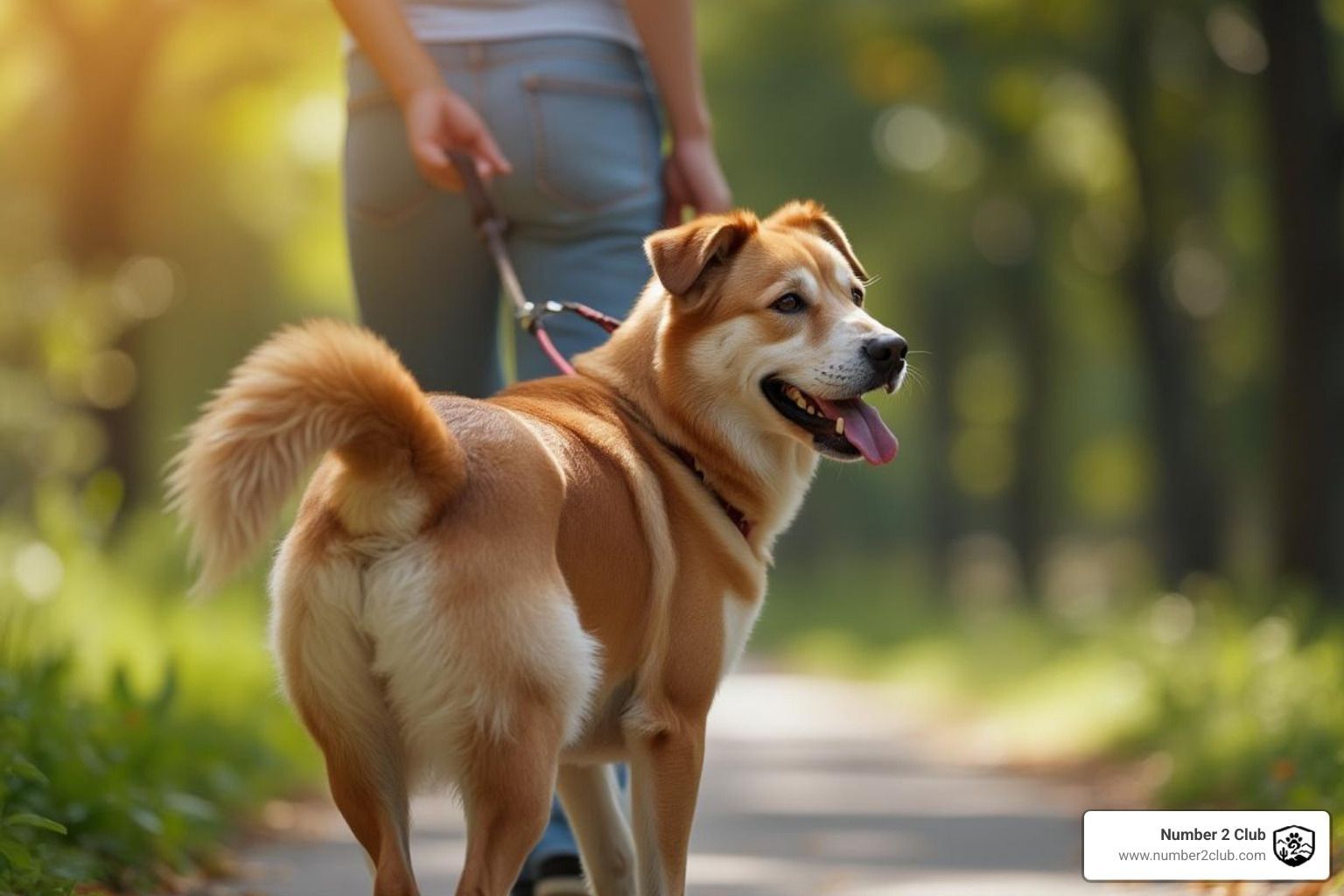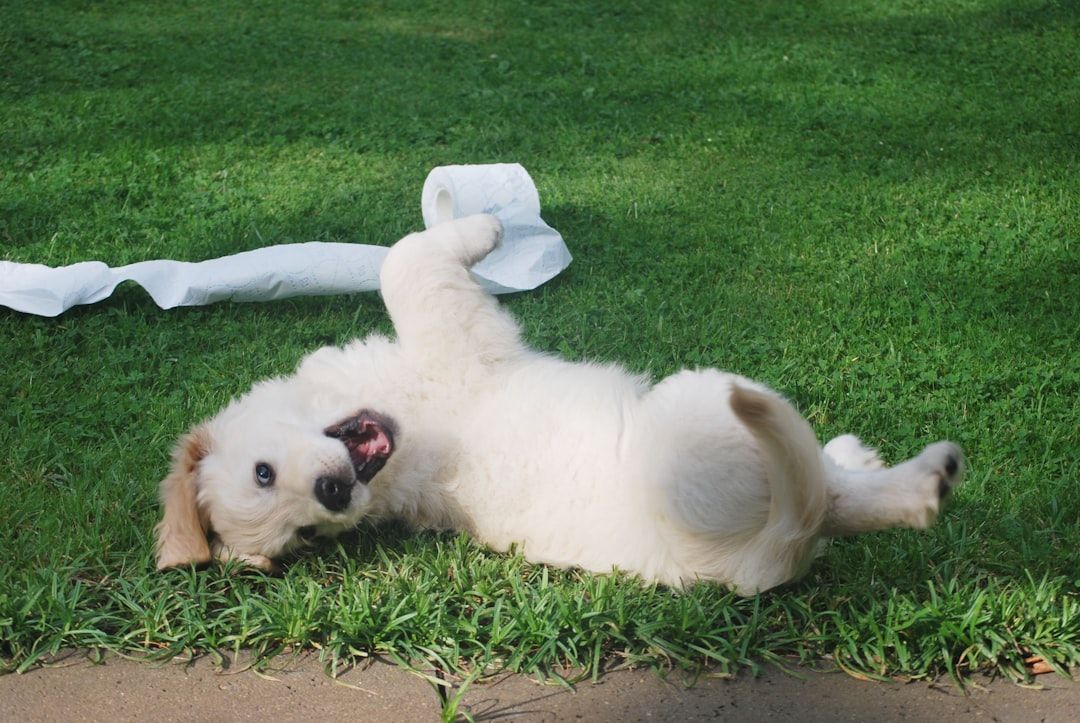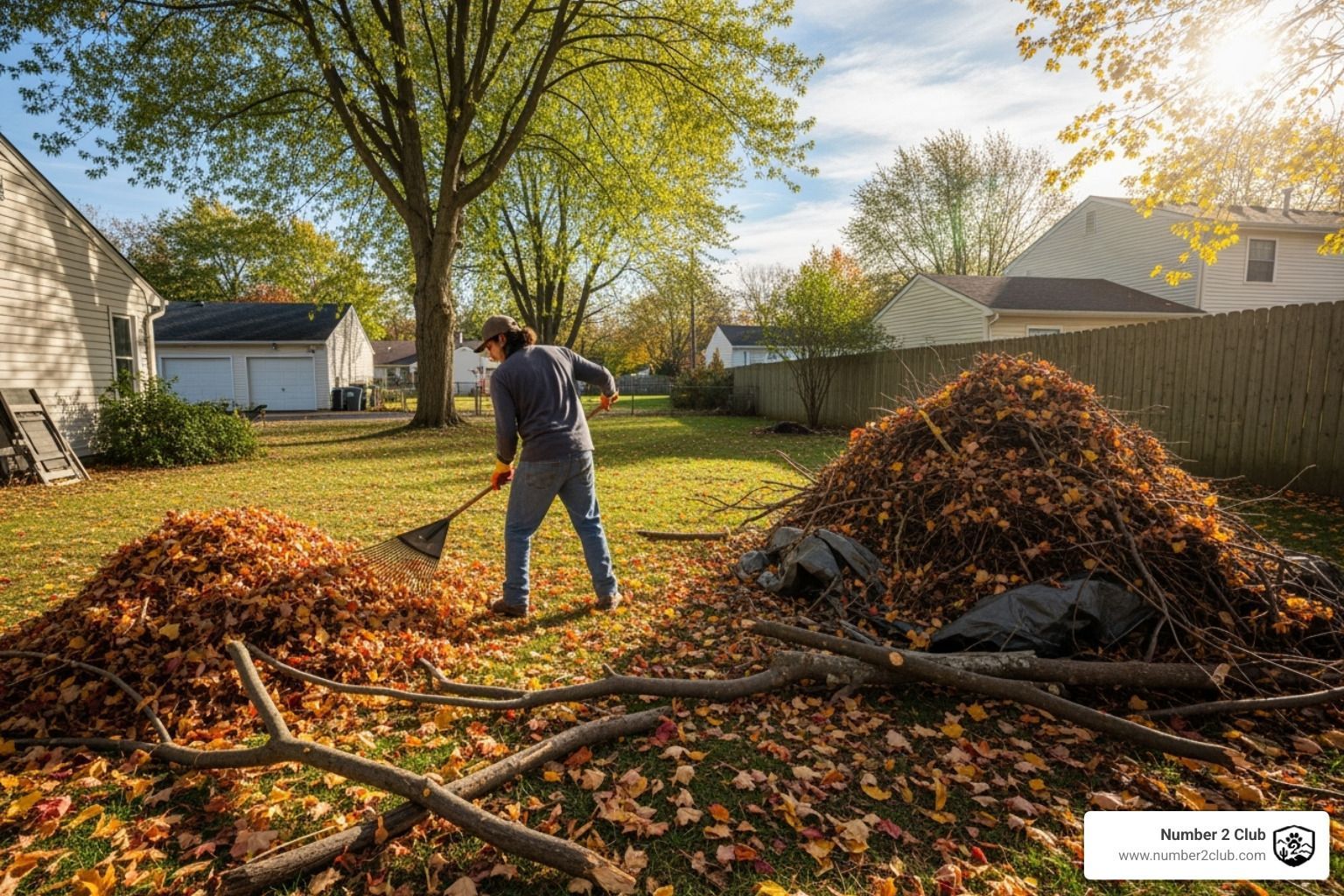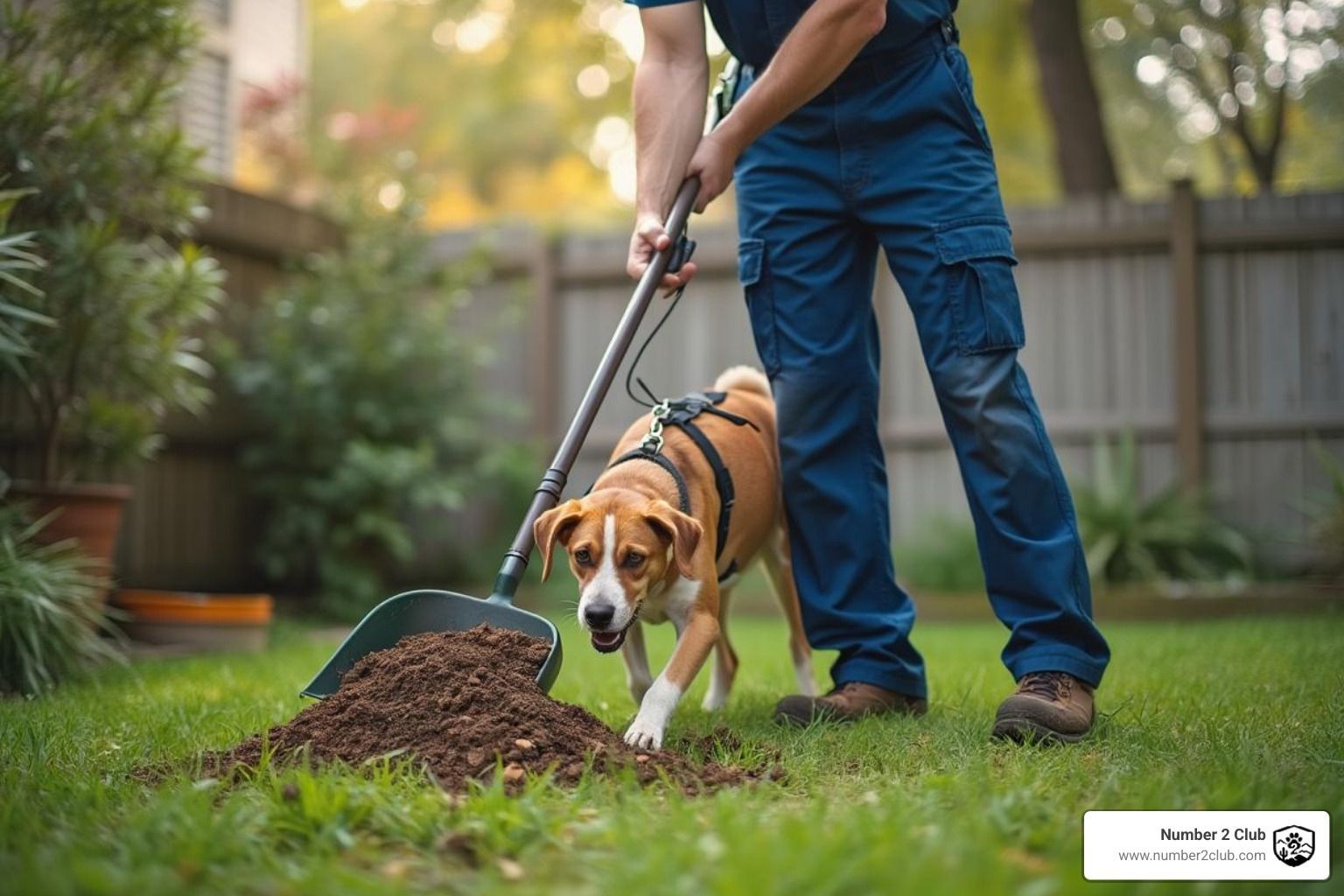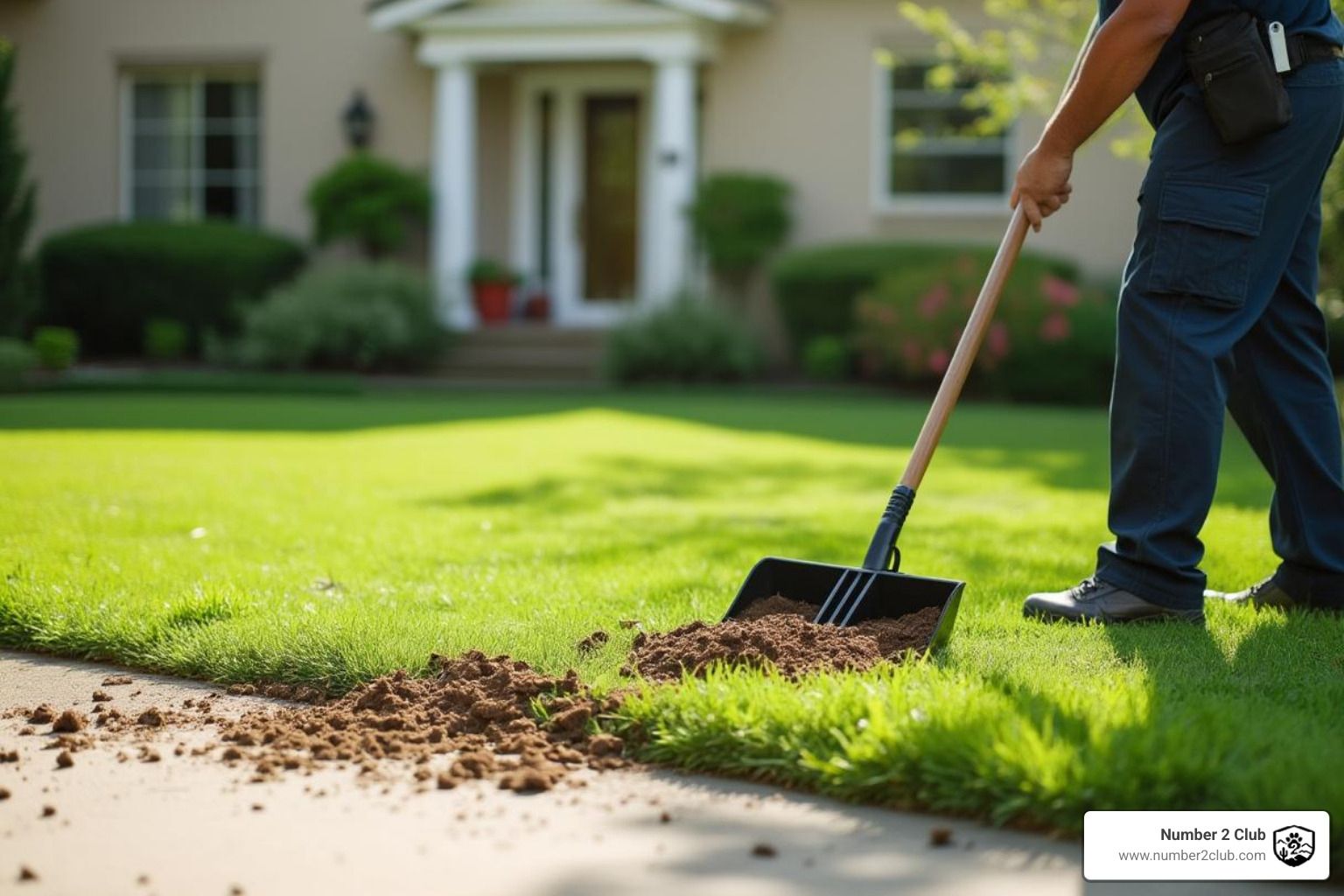The Ultimate Blueprint for Starting a Dog Poop Scooping Business
Introduction: Tapping into the Booming Pet Industry
If you're interested in starting a dog waste removal business, you're in the right place. This guide outlines the key steps to launch your venture.
- Plan Your Business: Research your market, define your services, and set financial goals.
- Handle Legal & Financials: Choose a business structure, register for taxes, get insurance, and open a business bank account.
- Gather Equipment: Acquire durable scoopers, heavy-duty bags, and a reliable vehicle.
- Market Your Services: Build a strong brand, establish an online presence, and use local advertising.
- Manage Operations: Plan efficient routes, schedule services, and handle waste disposal responsibly.
- Use Technology: Implement CRM software to streamline scheduling, billing, and communication.
The pet care market is set to hit $150.6 billion in 2024, with nearly 67% of U.S. homes owning a pet. This creates a huge demand for services that help busy or elderly dog owners manage the 274 pounds of waste each dog produces annually.
You can start this business with low costs—often under $1,000—and have the potential to earn $70,000 or more per year.
As Joseph Lopez nc, founder of Number 2 Club, I've spent years in the pet waste removal industry. My experience in starting a dog waste removal business from scratch provides unique insights into building a successful company.
Here's a quick look at the market opportunity:
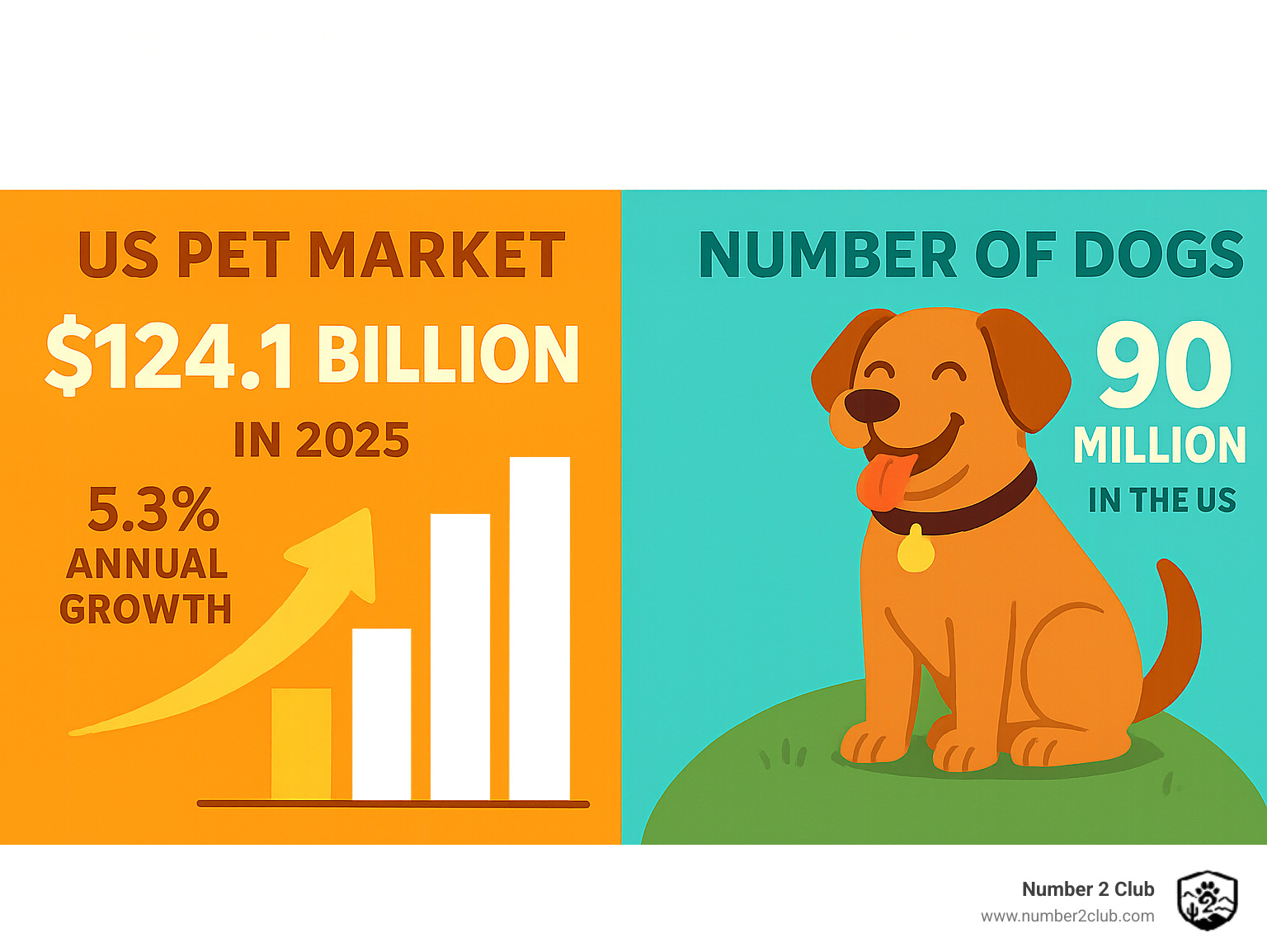
Why a Dog Waste Removal Business is a Golden Opportunity
The pet care market is booming, projected to hit $150.6 billion in 2024 and grow 5.1% annually through 2030. This growth includes essential services that make life easier for pet owners, which is why starting a dog waste removal business is such a strong opportunity.
With 90 million dogs in the U.S., there's a massive market. Each dog produces about 340 grams of waste daily, creating a constant need for cleanup services, especially for busy families, seniors, and those with physical limitations. The rise in pet ownership, noted by sources like The American Veterinary Medical Association , directly translates to a larger customer base.
This industry combines high earning potential with low overhead. You can start with basic gear for a few hundred dollars, and even with licensing and insurance, initial costs can be under $2,000. This low barrier to entry makes it an accessible venture.
The growth potential is significant. A side hustle can become a profitable, full-time business. Online forums show entrepreneurs earning over $2,000 monthly within three months, with some scaling to over $10,000 in monthly revenue. The recurring nature of the service ensures a steady income stream.
This business also offers great flexibility, allowing you to set your own hours and work outdoors. While you'll face varied weather and must follow waste disposal rules, the benefits of low startup costs, recurring income, and autonomy are substantial.
Understanding Your Potential Earnings and Profitability
The profitability of a dog waste removal business is impressive. Efficient operators visiting 4-5 yards per hour can earn over $35 per hour, with some reaching $60. Annually, a dedicated solo operator can make up to $70,000 after expenses.
Gross profit margins are around 50%, with net margins up to 20%, thanks to low ongoing costs.
Pricing models typically focus on recurring services, creating a stable income. Weekly service for one dog might start at $16, while per-visit charges range from $20 to $45. Monthly rates can vary from $95 in smaller markets to $110 in larger ones.
Key factors influencing our pricing include:
- Number of dogs: More dogs mean more work.
- Yard size: Larger yards take more time.
- Service frequency: More frequent visits often have a lower per-visit rate.
- Initial cleanups: The first visit may cost more if the yard requires significant work.
- Add-on services: Extras like deodorizing or waste haul-away can increase revenue.
For a full breakdown of our pricing structure, see our Dog Poop Removal Prices page. Recurring services are the foundation of a stable and predictable business model.
Your Blueprint for Starting a Dog Waste Removal Business
This section is your roadmap to starting a dog waste removal business. Building a sustainable operation starts with a solid foundation of research and planning.
Begin with market research to understand your potential customers in areas like Litchfield Park, AZ, or Goodyear, AZ. Analyze your competitors to see what they charge and where you can offer a unique service. Then, define your target audience, whether it's homeowners, apartment complexes, or commercial properties. At Number 2 Club, we serve both Commercial Dog Waste Removal Services and Residential Dog Waste Removal Services , demonstrating the market's breadth.
Step 1: Create a Solid Business Plan
A business plan is your guide to success. It clarifies your vision and sets your goals. Your plan should include:
- Executive Summary: A brief overview of your business and its goals.
- Company Description: What your business does and what makes it unique.
- Services Offered: A clear list of your services, such as weekly cleanups, one-time visits, and add-ons like deodorizing.
- Market Analysis: Your findings on customers and competitors.
- Marketing and Sales Strategy: How you will attract clients.
- Financial Projections: Startup costs, monthly expenses, and revenue forecasts.
- Operations Plan: Your day-to-day processes, including scheduling and routing.
- Management Team: Your skills and any future hiring plans.
A simple, usable plan is best. You can find helpful downloadable business plan templates to get started.
Step 2: Handle the Legal and Financial Setup
Making your business official protects you and builds credibility.
First, choose a business structure. A Limited Liability Company (LLC) is highly recommended because it separates your personal assets from your business, protecting you from liability.
Next, register your business name after ensuring it's available in your state. Secure the corresponding website domain at the same time.
For tax purposes, get an Employer Identification Number (EIN) from the IRS, which is like a Social Security number for your business. You can easily get your EIN from the IRS online. Also, research any required state and local sales taxes.
It is essential to open a separate business bank account and credit card. Keeping business and personal finances separate simplifies accounting and protects your personal assets.
Finally, get business insurance. General liability insurance is a must, covering accidental property damage or injuries. It can be affordable, sometimes as low as $14.58 a month. As you grow, consider workers' compensation and commercial auto insurance. Also, research and obtain any necessary state and local permits for your operations and waste management to avoid fines.
Gearing Up: Equipment, Operations, and Safety
With your business planned and legally structured, it's time to focus on the practical side of starting a dog waste removal business: the right tools, efficient operations, and safe waste disposal.

Essential Equipment and Supplies You'll Need
The right equipment makes your work efficient and professional. Invest in quality tools from the start to save time and money later.
- Pooper Scoopers: Choose durable, ergonomic tools like a dustpan and rake combo or a high-quality jaw scooper to minimize back strain.
- Waste Bags & Bins: Use heavy-duty, odor-resistant bags (13-gallon kitchen bags work well). Transport waste in sealed bins or buckets with tight-fitting lids to keep your vehicle clean.
- Hygiene Supplies: Keep kennel-grade disinfectant on hand to clean tools between jobs and prevent cross-contamination. Offering yard deodorizing is a great add-on service. Always wear disposable or washable gloves.
- Vehicle and Attire: A reliable car, truck, or van is essential for carrying your gear. A simple branded uniform, like a polo shirt with your logo, helps build a professional image.
- Safety Gear: Wear waterproof, non-slip boots to protect yourself from slips and splashes.
Managing Daily Operations and Waste Disposal
Efficiency is key to maximizing profits.
Route planning is critical. Group clients by location to minimize driving and maximize scooping time. Route optimization software is a valuable tool for fitting more clients into your day.
Use specialized scheduling software to manage appointments, organize client details, and handle recurring services. This prevents missed visits and keeps your business running smoothly.
For waste disposal, there are two main methods:
- Client's Trash Can: Double-bag the waste and place it in the client's outdoor trash bin for their regular curbside pickup. This is the most common method.
- Haul-Away Service: Remove the waste from the property for an extra fee. If you offer this, you must comply with local regulations for transporting and disposing of animal waste, which may require using specific landfills.
Always check with your local waste management and health department in areas like Litchfield Park, AZ, or Buckeye, AZ, as regulations vary. Proper disposal is crucial for environmental safety and preventing the spread of bacteria.
Preventing cross-contamination is vital. Sanitize your tools and boots between every job and always wear gloves to protect clients, their pets, and yourself from harmful pathogens like Canine Parvovirus. For more on health risks, consult resources like the Canine Parvovirus information from the AVMA.
Marketing Your Business and Finding Your First Customers
Effective marketing is key to acquiring customers and growing a loyal client base when starting a dog waste removal business.
Building Your Brand and Online Presence
A strong brand builds trust and recognition. Start by choosing a name that is memorable and professional, and ensure it's available as a domain name and on social media. Then, invest in a clean, recognizable logo.
Your website is your online storefront where clients can learn about services, see pricing, and book appointments. Optimize it for local search (SEO) so customers in areas like Litchfield Park or Goodyear can find you.
A Google Business Profile is crucial for local search visibility. Keep it updated with your information, services, and photos, and encourage happy clients to leave reviews.
Use social media marketing on platforms like Facebook and Instagram to engage with pet owners. Share before-and-after photos of clean yards and interact with your audience. Ensure brand consistency with professional marketing materials like business cards, flyers, and vehicle wraps.
Proven Strategies to Acquire Customers
Use a mix of strategies to attract your first clients.
- Flyers and Door Hangers: Distribute these at local pet stores, vet clinics, dog parks, and in target neighborhoods.
- Local Facebook Groups: Join community groups to share helpful tips and engage with potential clients, always following group rules.
- Partnerships: Build relationships with local vets and pet stores to generate referrals.
- Referral Programs: Reward existing clients with a discount or small gift for referring new customers. Word-of-mouth is powerful.
- Online Advertising: Use targeted Google and Facebook Ads to reach pet owners in your specific service areas.
- Ask for Reviews: Politely ask satisfied customers to leave reviews on your Google Business Profile or Facebook page.
- Vehicle Wraps: A branded vehicle acts as a mobile billboard, promoting your business as you drive through Litchfield Park, Goodyear, Verrado, and Buckeye.
For more in-depth strategies, check out Our Blog.
Scaling Your Business with Technology and Software
As your business grows, managing clients, schedules, and billing manually becomes overwhelming. Technology and software are essential for changing your operations and enabling seamless scaling.
How CRM Software Can Transform Your Operations
Customer Relationship Management (CRM) software is a vital tool for service-based businesses. It streamlines administrative tasks, improves communication, and frees up your time to focus on growth.
Key CRM benefits include:
- Scheduling and Dispatching: Use drag-and-drop scheduling, assign jobs, and optimize routes with GPS integration.
- Client Management: Keep all client information in one place, including contact details, service history, and specific notes for personalized service.
- Automated Communication: Send automated appointment reminders, "on-my-way" texts, and service follow-ups to improve professionalism.
- Invoicing and Payments: Automate billing with recurring invoices, accept online payments, and track payment status to ensure steady cash flow.
- Route Optimization: Create the most efficient sequence of stops to save gas, reduce vehicle wear, and fit more appointments into your day.
Exploring various pet waste removal software options is highly recommended. Look for features like customer portals, reporting and analytics, and accounting software integration. Investing in the right CRM from the start builds a strong foundation for growth.
Frequently Asked Questions about Starting a Poop Scooping Business
Here are answers to common questions about starting a dog waste removal business.
How much does it cost to start a dog waste removal business?
This business has a very low barrier to entry. A basic setup can cost under $1,000, covering essential scooping equipment and business registration fees. A more comprehensive launch, including full licensing, insurance, professional marketing materials, and a vehicle wrap, could range from $2,000 to $5,000+.
Is a dog poop removal business actually profitable?
Yes, it can be very profitable due to low overhead and a recurring revenue model. Gross margins are typically around 50%. Efficient solo operators can earn $40,000-$70,000 annually, and some larger businesses generate millions in revenue. The constant demand and high client retention make it a financially sound venture.
What do you do with the dog poop you collect?
The most common method is to double-bag the waste and place it in the client's own outdoor trash bin for their regular curbside pickup. Some businesses offer a haul-away service for an additional fee. If you do this, you must comply with all local regulations for transporting and disposing of animal waste, which may require using specific landfills. Always check the rules in your service area, such as Litchfield Park, AZ, or Buckeye, AZ.
Conclusion: Your Next Steps to a Successful Business
Well, you've made it to the end of our guide! We truly hope this journey has shown you just how incredible the opportunity is for starting a dog waste removal business. As we've explored together, this isn't just a niche service; it's a rapidly growing industry driven by pet parents who desperately need a helping hand.
Think about it: the low barrier to entry means you don't need a huge investment to get going. And the high demand? It's consistently there because, well, dogs will always be dogs! This unique combination makes it a truly golden opportunity for anyone looking to build their own successful venture.
We've walked you through the blueprint: from a solid business plan and getting your legal ducks in a row, to gearing up with the right equipment and smart marketing tactics. Leveraging technology like CRM software can truly put your operations on autopilot, allowing you to scale smoothly and efficiently.
At The Number 2 Club, we're not just writing about this business; we're living it every day. We know the joy of helping communities stay clean and healthy, and the satisfaction of building something of your own. This business offers incredible flexibility, strong profitability, and the chance to be your own boss. It’s an exciting path, and we truly believe you have what it takes to succeed.
Ready to take control of your future and build a thriving business? Don't let this unique opportunity pass you by. Your next step to success is just a click away.



